Kirchhoff’s current and voltage laws
In our last article, we looked at the principles and operation of a d.c motor. In this article, we’re going to investigate Kirchoff’s current and voltage laws, as well as how to apply them to engineering problems.
Kirchoff’s law of current
Kirchoff’s law of current states that the algebraic sum of all current at any node in an electrical circuit is equal to zero or the sum of the currents flowing into a node is equal to the sum of the currents flowing out of that node.

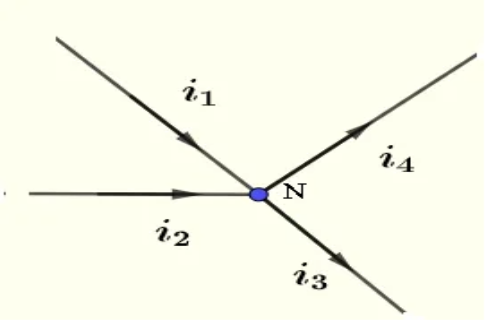
At the node N above, we write:

Kirchoff’s law of voltage
Kirchoff’s law of voltage states that in any closed loop in an electrical circuit, the algebraic sum of all voltages around the loop is equal to zero.

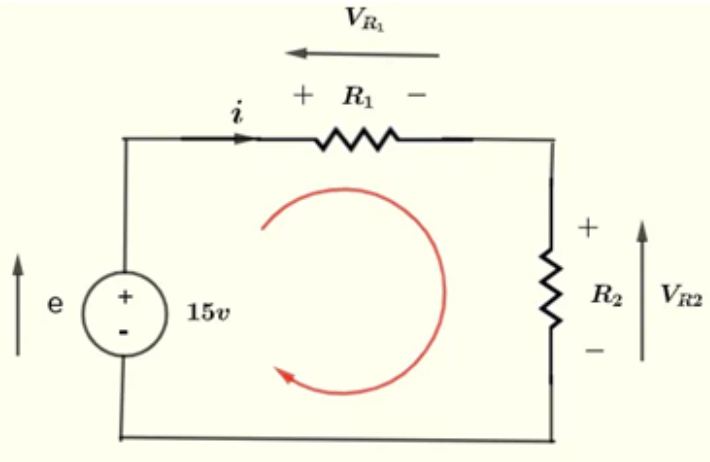
Using the closed loop, we may write:

Since the voltages across the resistors are in the opposite direction to the e.m.f of the cell.
Electromotive force e.m.f and internal resistance
The electromotive force (e) or e.m.f is the energy provided by a cell or battery per coulomb of charge passing through it, and it’s measured in volts V.
It’s equal to the potential difference across the terminal of the cell when no current is flowing:
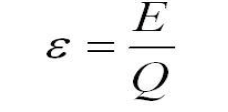
- ꜫ = electromotive force in volts, V
- E = energy in joules, J
- Q = charge in coulombs, C
Batteries and cells have an internal resistance (r) which is measured in ohm’s (Ω). When electricity flows around a circuit the internal resistance of the cell itself resists the flow of current and so thermal (heat) energy is wasted in the cell itself.
Ohms law is then expanded to include this internal resistance

- ꜫ = electromotive force in volts, V
- I = current in amperes, A
- R = resistance of the load in the circuit in ohms, Ω
- r = internal resistance of the cell in ohms, Ω
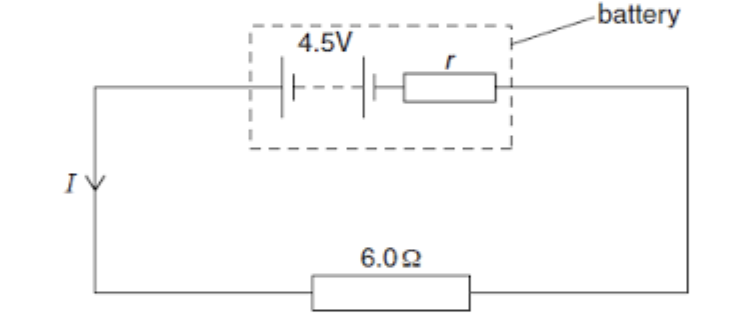
We can rearrange the above equation;

and then to

In this equation (V) appears which is the terminal potential difference, measured in volts (V).
The potential difference across the terminals of the cell when current is flowing in the circuit is always less than the e.m.f. of the cell.
We can also calculate the e.m.f from a graph of V against I. If we plot a graph of terminal potential difference (V) against the current in the circuit (I) we get a straight line with a negative gradient.
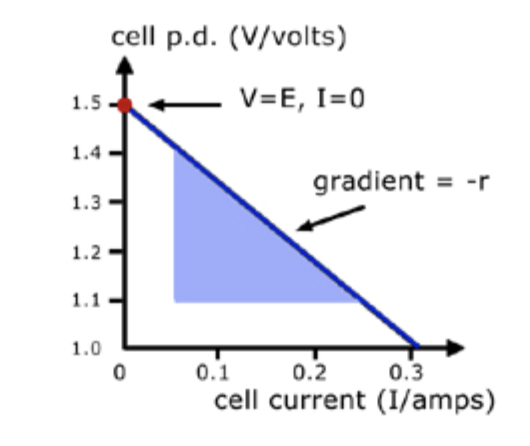
We can then rearrange the e.m.f. equation from above to match the general expression for
a straight line, y = mx +c.
If we start with ꜫ = V + Ir
Rearrange to make V the subject: V = -Ir + ꜫ
Compare this to Y = mx + c (typical equation for a straight line graph)
We can see that the gradient = – r and the intercept = ꜫ
Interested in our courses?
You can read more about our selection of accredited online electrical engineering courses here.
Check out individual courses pages below:
Diploma in Electrical and Electronic Engineering
Higher International Certificate in Electrical and Electronic Engineering
Diploma in Electrical Technology
Diploma in Renewable Energy (Electrical)
Higher International Diploma in Electrical and Electronic EngineeringAlternatively, you can view all our online engineering courses here.
Recent Posts
Understanding and Calculating Generator Efficiency and Output Parameters
Understanding and Calculating Generator Efficiency and Output Parameters Introduction The performance of a generator is often judged by how efficiently it converts mechanical energy into electrical energy. Understanding and calculating this efficiency, along with other key output parameters such as voltage, current, power factor, and load, is essential for evaluating performance and ensuring reliable operation. […]
Essential Cooling and Protection Devices: How They Work and Why They Matter
Essential Cooling and Protection Devices: How They Work and Why They Matter Introduction Generators produce a significant amount of heat and electrical stress during operation, which can affect performance and lifespan if not properly managed. That’s where cooling and protection devices come in. These essential systems, including fans, radiators, circuit breakers, and relays, work together […]
Justifying the Choice of Generators Based on Requirements and Characteristics
Justifying the Choice of Generators Based on Requirements and Characteristics Introduction Selecting the right generator isn’t just about power output, it’s about finding a machine that meets specific operational needs, efficiency goals, and environmental conditions. Different applications demand different generator types, capacities, and features. In this article, we’ll explore how to justify the choice of […]

